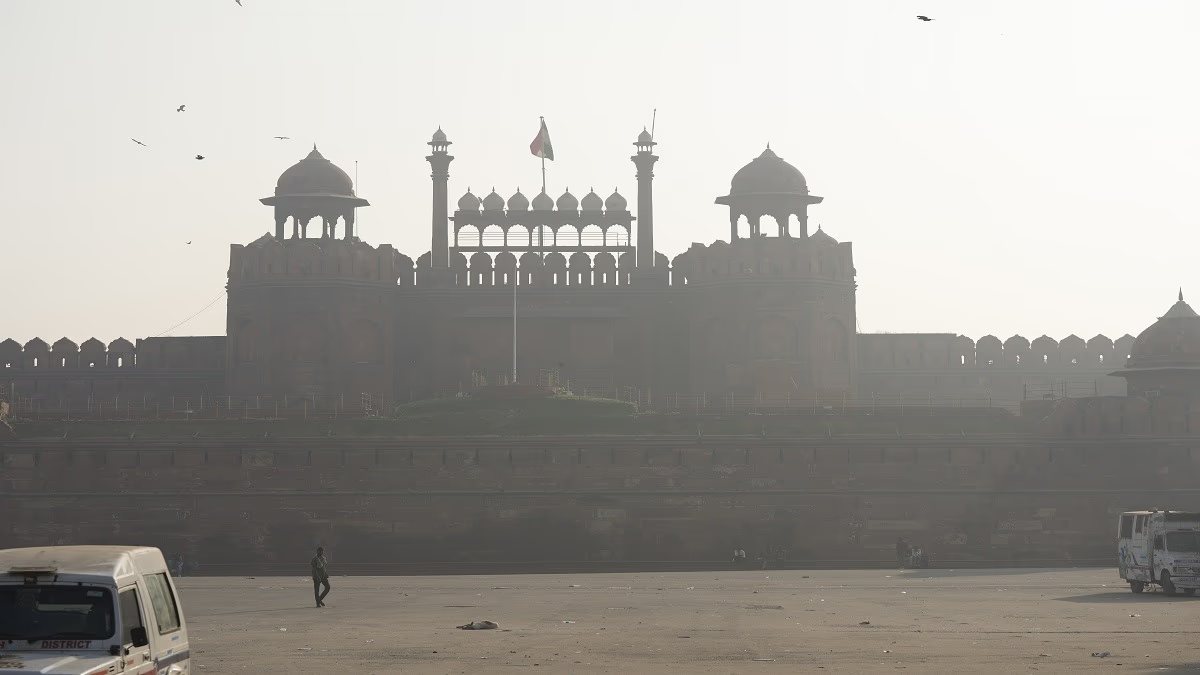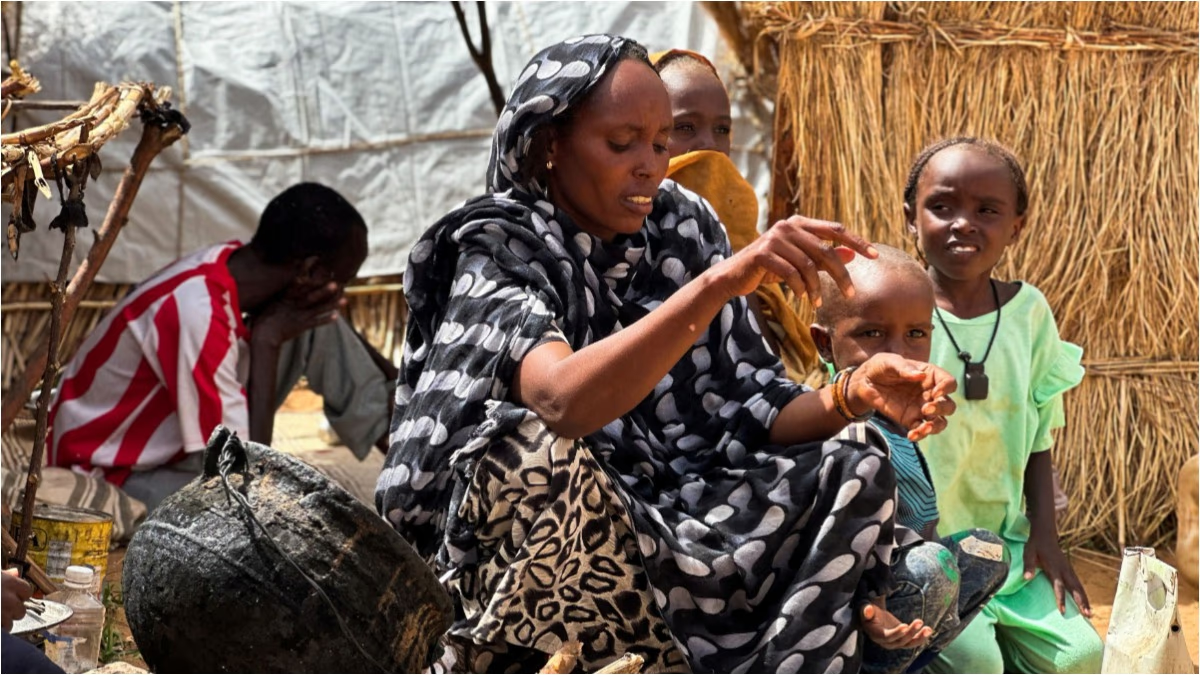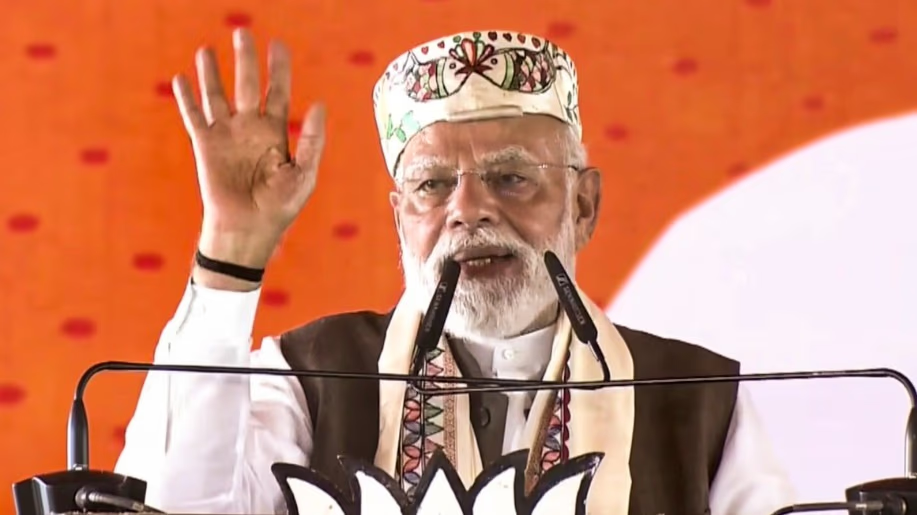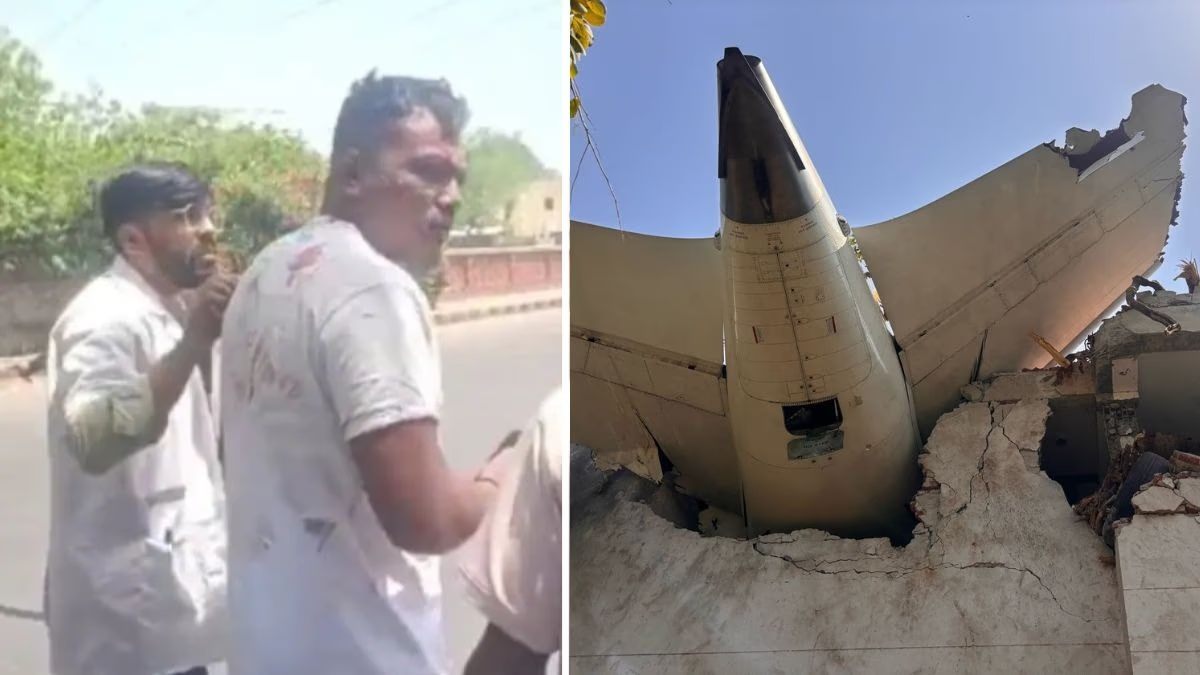On the night of Diwali, Delhi experienced widespread cracker bursting across its districts. Even with a ban in place, blatant violations were evident throughout the city. Nevertheless, the air quality index (AQI) observed was not 'severe' but a notch better at 'very poor.' As per pollution monitoring agencies like the Delhi Pollution Control Committee (DPCC), Central Pollution Control Board (CPCB), and India Meteorological Department (IMD), this data represents a 24-hour average. Although the AQI was anticipated to be alarmingly high over the previous 24 hours, it maintained a 'very poor' status instead of deteriorating to 'severe.'
Analysis by monitoring bodies highlighted alarming pollution levels on Diwali night, with PM2.5 and PM10 particles soaring to 30 times above the standard limits, posing significant health risks.
Explaining the real-time and 24-hour average AQI, Mohan P. George, former Additional Director at DPCC, remarked that the AQI is meant for the general public; hence, the focus is on 24-hour average data to ensure easy comprehension. He noted that in India, we release AQI data, while western nations use a color code system like green, yellow, and red, where differences between AQI 215 and 225 aren't highlighted within the 200-300 range as the color coding remains the same.
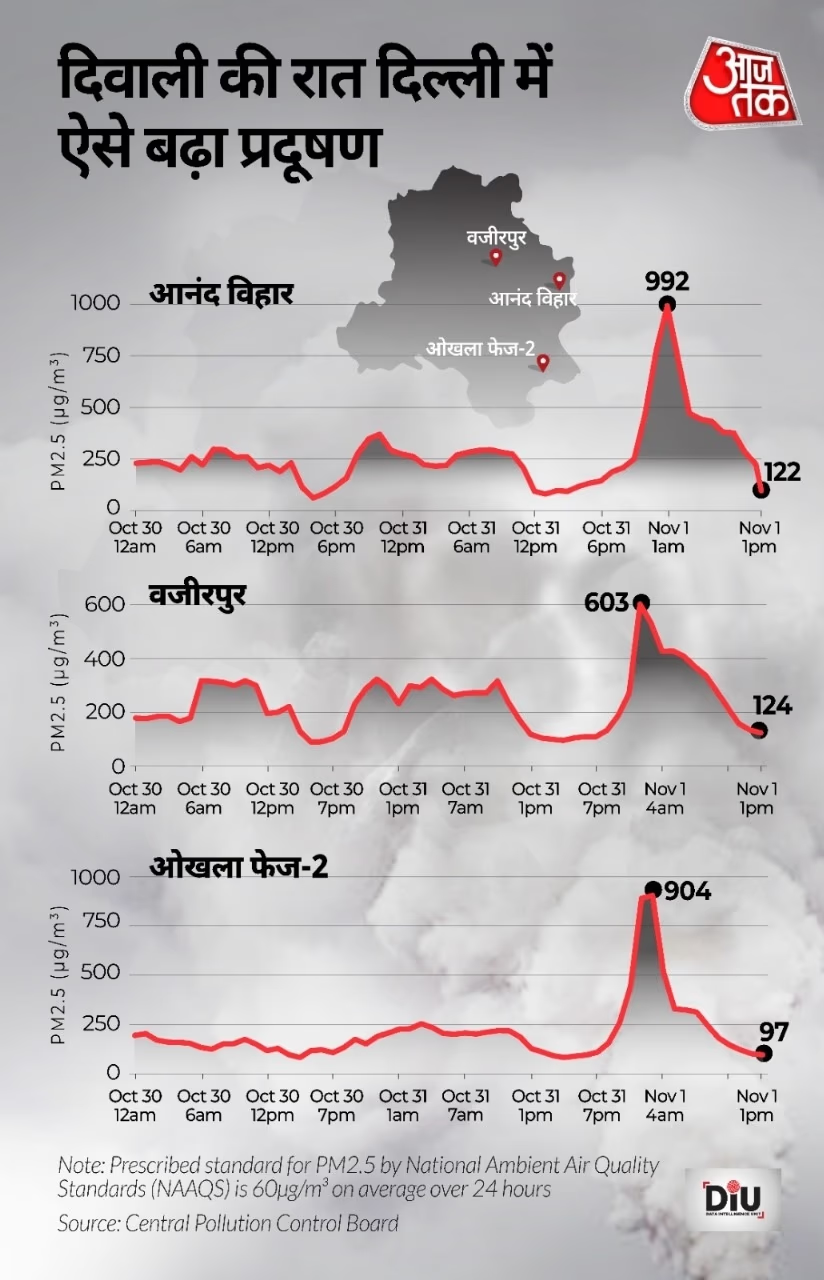
Source: aajtak
Delhi's Current Situation
Rising pollution levels during Diwali each year is a consistent concern. Often, real-time data doesn't accurately capture deteriorating conditions. In years with low temperatures and sluggish winds, pollution from fireworks can linger longer in the atmosphere. Consequently, even minor firecracker use can severely pollute the air. Conversely, favorable weather with heightened temperatures and stronger winds can mitigate the immediate effects of large-scale firework use. This year's data reveals that even with extensive fireworks, air quality remained less impacted than in previous years.
South Delhi's Nehru Nagar Case
Nehru Nagar saw a drastic dip in air quality. By October 31, 5 PM, PM2.5 concentration measured at 101 micrograms per cubic meter. As night descended, conditions worsened as the sky filled with fireworks. At 8 PM, PM2.5 concentration surged to 324 micrograms per cubic meter. By 9 PM, it spiked further to a hazardous 539 micrograms per cubic meter and reached 898 micrograms per cubic meter by 10 PM, peaking at 1,527 micrograms per cubic meter by midnight.
This indicates that air pollution skyrocketed over 15 times between Diwali evening at 5 PM and midnight following the fireworks. After midnight, as the bursting of crackers reduced, pollution levels started to decline. By 1 AM on November 1, concentrations showed a slight decrease to 1,172 micrograms per cubic meter. By the next morning at 11 AM, the level decreased further to 145 micrograms per cubic meter.
East Delhi's Vivek Vihar Scenario
In East Delhi's Vivek Vihar, Diwali night saw heightened air pollution due to firecrackers, evidenced by a sharp rise in PM2.5 levels. At 5 PM on October 31, the PM2.5 concentration stood at 101 micrograms per cubic meter. However, with nightfall, the situation quickly deteriorated. By 8 PM, PM2.5 concentration more than doubled to 222 micrograms per cubic meter, marking the start of a significant decline in air quality. By 9 PM, readings increased to 296 micrograms per cubic meter, and an hour later, concentration escalated to 677 micrograms per cubic meter. The peak air pollution occurred by 11 PM when PM2.5 levels soared to 1,210 micrograms per cubic meter, nearly doubling in just an hour.
At midnight, the situation worsened with readings hitting 1,853 micrograms per cubic meter, which was over 17 times the levels recorded at 5 PM. By 1 AM on November 1, concentration dropped to 1,416 micrograms per cubic meter as the fireworks diminished.
Nehru Nagar's Air Quality Update
Prior to cracker ignition on October 31, 5 PM, PM2.5 was at 101 micrograms per cubic meter. By 8 PM, after firecrackers erupted, there was a notable increase.
8 PM - 324 micrograms per cubic meter9 PM - 539 micrograms per cubic meter10 PM - 898 micrograms per cubic meter11 PM - 1,123 micrograms per cubic meterMidnight - 1,527 micrograms per cubic meter
By 1 AM on November 1, concentration decreased to 1,172 micrograms per cubic meter as firework activity lessened, and by 11 AM, it dropped to 145 micrograms per cubic meter.
Vivek Vihar Air Quality Review
By 5 PM on October 31, before fireworks, concentration was at 101 micrograms per cubic meter. Post-fireworks, by 8 PM, this surged notably.October 31, Diwali, 5 PM, PM2.5 concentration (before fireworks) - 114 micrograms per cubic meter
8 PM - 222 micrograms per cubic meter9 PM - 296 micrograms per cubic meter10 PM - 677 micrograms per cubic meter11 PM - 1,210 micrograms per cubic meter (almost double in an hour)12 midnight - 1,853 micrograms per cubic meter (over 17 times from 5 PM levels)1 AM (November 1) - 1,416 micrograms per cubic meter as levels decreased post fireworks
By 11 AM on November 1, it continued to drop to 119 micrograms per cubic meter.
AQI Over the Last Three Years
As of today 4 PM, Delhi's average AQI was 339, with yesterday's 4 PM AQI at 328, both falling in the 'very poor' category. Despite Diwali's pollution, the 24-hour AQI showed just an 11-point difference.
Last year's Diwali saw Delhi's average AQI at 301, compared to 218 a day prior. In 2022, Diwali had an average AQI of 302, whereas the day before showed a higher 312 AQI.
